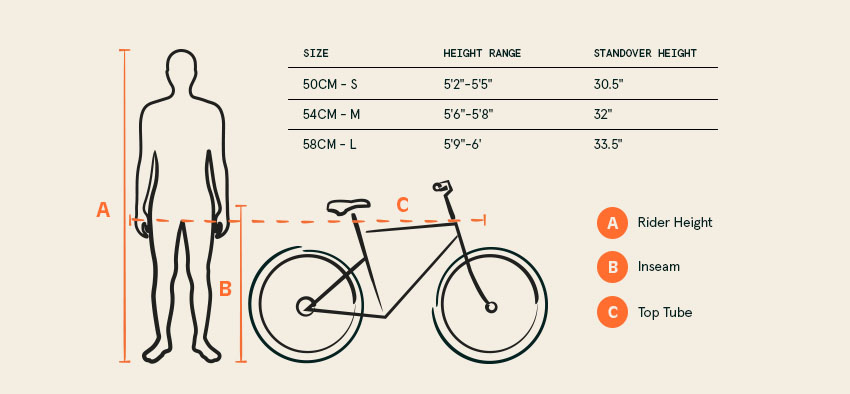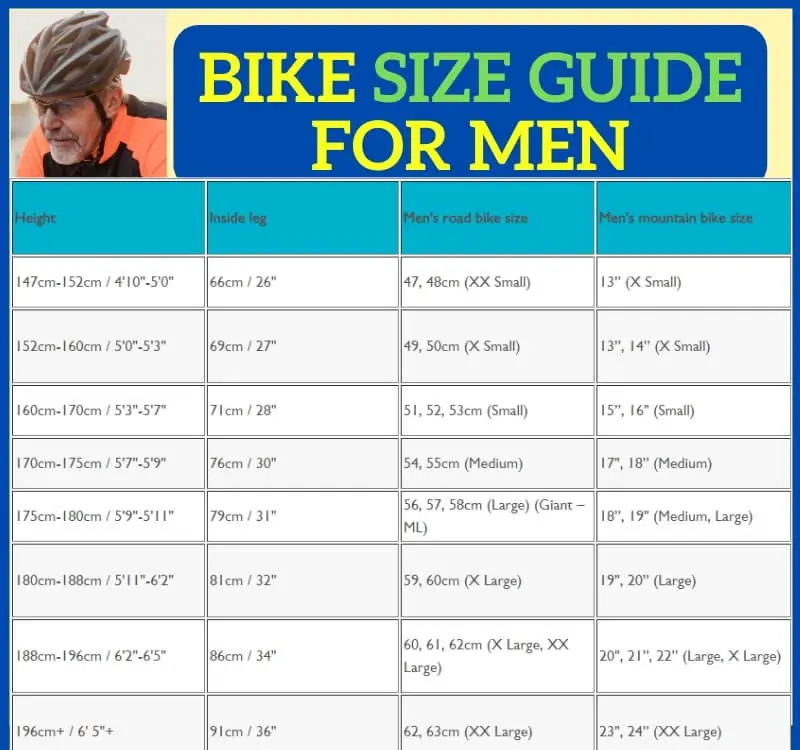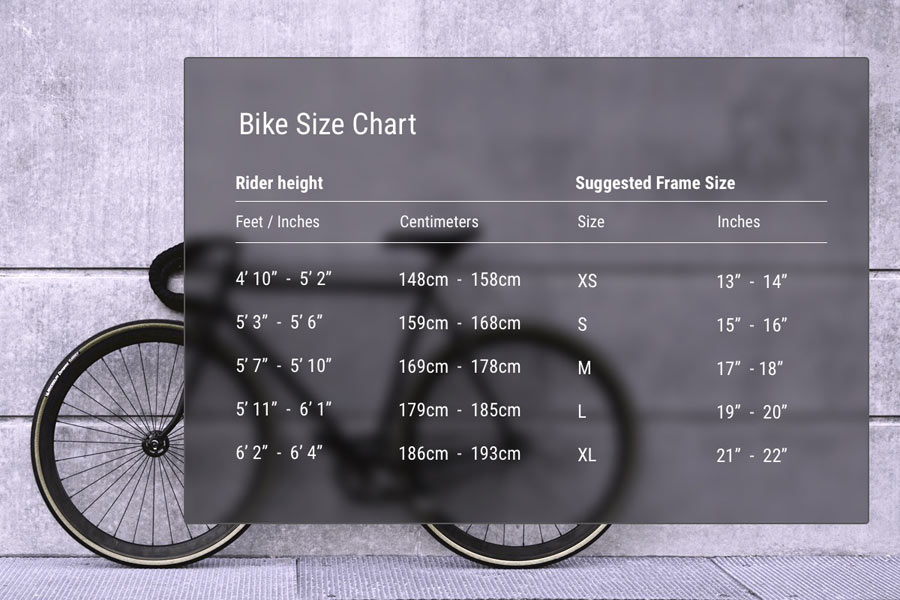Why Bike Size Matters: The Importance of a Proper Fit
When it comes to cycling, having a bike that fits properly is crucial for a comfortable and enjoyable ride. A bike that is too small or too large can lead to discomfort, fatigue, and even injury. This is why determining your bike size is essential before making a purchase. But what’s my bike size, and how do I find it? The answer lies in understanding the importance of a proper fit.
A bike that fits properly allows for efficient energy transfer, enabling riders to maintain a comfortable position and generate power with each pedal stroke. This, in turn, reduces the risk of injury and fatigue, making it possible to ride for longer periods without discomfort. On the other hand, a bike that is too small or too large can put unnecessary strain on the body, leading to issues such as back pain, neck strain, and numbness in the hands and feet.
In addition to comfort and efficiency, a proper bike fit also plays a critical role in safety. A bike that is too large can be difficult to control, increasing the risk of accidents and injuries. Conversely, a bike that is too small can be unstable, making it challenging to navigate rough terrain or tight corners.
So, how do you determine your bike size? The first step is to take your measurements, including your height, inseam, and arm length. These measurements will help you determine your ideal bike size, taking into account factors such as standover height, seat height, and handlebar height. By understanding your measurements and how they relate to bike size, you can find a bike that fits you perfectly, providing a comfortable and enjoyable ride.
How to Measure Yourself for a Bike: A Step-by-Step Guide
To determine your bike size, you’ll need to take a few key measurements. These measurements will help you find a bike that fits you perfectly, ensuring a comfortable and enjoyable ride. So, what’s my bike size? Let’s start by taking your measurements.
Step 1: Measure Your Height
Stand against a wall with your feet shoulder-width apart and your back straight. Measure the distance from the floor to the top of your head. This will give you your overall height, which is essential for determining your bike size.
Step 2: Measure Your Inseam
Stand against a wall with your feet shoulder-width apart and your back straight. Measure the distance from the floor to the crotch seam of your pants. This will give you your inseam, which is critical for determining the correct standover height for your bike.
Step 3: Measure Your Arm Length
Hold your arm straight out to the side, with your palm facing downwards. Measure the distance from the center of your back to the tip of your middle finger. This will give you your arm length, which is essential for determining the correct handlebar height for your bike.
Step 4: Use a Bike Size Chart
Once you have your measurements, you can use a bike size chart to determine your ideal bike size. Bike size charts typically include a range of sizes, from small to extra-large, and provide a corresponding height range for each size. By matching your measurements to the chart, you can find a bike that fits you perfectly.
When using a bike size chart, keep in mind that different manufacturers may have slightly different sizing requirements. Be sure to check the manufacturer’s size chart for the specific bike model you’re interested in to ensure the best fit.
Understanding Bike Size Charts: What You Need to Know
Bike size charts can seem daunting, but understanding how to read and use them is crucial for finding the perfect fit. So, what’s my bike size? To answer this question, you’ll need to familiarize yourself with the different types of bike size charts and how to use them to your advantage.
There are two main types of bike size charts: numerical and categorical. Numerical charts list specific measurements, such as standover height and seat height, while categorical charts group bikes into general size categories (e.g., small, medium, large). When using a bike size chart, it’s essential to consider both types of charts to ensure the best fit.
When reading a bike size chart, pay attention to the following key measurements:
- Standover height: The distance from the ground to the top of the bike’s top tube.
- Seat height: The distance from the ground to the top of the saddle.
- Handlebar height: The distance from the ground to the top of the handlebars.
- Wheel size: The diameter of the wheels, which can affect the overall size and fit of the bike.
By considering these measurements and matching them to your own measurements, you can find a bike that fits you perfectly. However, it’s essential to remember that bike size charts are not always exact, and individual factors such as riding style and flexibility can affect the fit of the bike.
Additionally, some bike manufacturers provide more detailed size charts, including measurements for different types of bikes (e.g., road, mountain, hybrid). When shopping for a bike, be sure to check the manufacturer’s size chart for the specific bike model you’re interested in to ensure the best fit.
The Role of Bike Type in Determining Size: Road, Mountain, and Hybrid Bikes
When it comes to determining your bike size, the type of bike you’re interested in plays a significant role. Different types of bikes, such as road, mountain, and hybrid bikes, have unique sizing requirements that must be taken into account. So, what’s my bike size? To answer this question, you’ll need to consider the specific type of bike you’re interested in and how it affects the sizing.
Road bikes, for example, typically have a more aggressive riding position, which requires a slightly smaller frame size to accommodate the rider’s position. Mountain bikes, on the other hand, have a more upright riding position, which requires a slightly larger frame size to provide stability and control. Hybrid bikes, which combine elements of road and mountain bikes, often have a more neutral riding position, which requires a frame size that falls somewhere in between.
When choosing a bike size, it’s essential to consider the specific type of bike you’re interested in and how it affects the sizing. For example, if you’re looking at a road bike, you may want to consider a smaller frame size to accommodate the more aggressive riding position. If you’re looking at a mountain bike, you may want to consider a larger frame size to provide stability and control.
In addition to the type of bike, the rider’s style and flexibility also play a significant role in determining the correct bike size. For example, a rider with a more flexible back may be able to accommodate a smaller frame size, while a rider with a less flexible back may require a larger frame size.
By considering the type of bike, the rider’s style, and flexibility, you can determine the correct bike size and ensure a comfortable and enjoyable ride. So, what’s my bike size? By taking the time to consider these factors, you can find the perfect fit and enjoy the many benefits of cycling.
Real-World Examples: How to Choose the Right Size for Popular Bike Models
Now that we’ve discussed the importance of bike size and how to measure yourself, let’s take a look at some real-world examples of popular bike models and how to choose the right size based on the manufacturer’s size chart and your own measurements.
For example, let’s say you’re interested in purchasing a Trek Domane road bike. According to Trek’s size chart, a rider with a height of 5’9″ (175 cm) and an inseam of 32″ (81 cm) would fit best on a size 56 cm frame. However, if you have a longer torso and shorter legs, you may want to consider a size 58 cm frame to ensure a comfortable riding position.
Another example is the Specialized Roubaix, a popular endurance road bike. According to Specialized’s size chart, a rider with a height of 5’11” (180 cm) and an inseam of 33″ (84 cm) would fit best on a size 58 cm frame. However, if you have a more aggressive riding style and prefer a more aerodynamic position, you may want to consider a size 56 cm frame.
For mountain bikes, the sizing requirements are often different. For example, the Giant TCX Advanced mountain bike has a more upright riding position, which requires a slightly larger frame size to provide stability and control. According to Giant’s size chart, a rider with a height of 5’10” (178 cm) and an inseam of 32″ (81 cm) would fit best on a size M frame.
These examples illustrate the importance of considering the specific bike model and manufacturer’s size chart when determining your bike size. By taking the time to research and compare different models, you can find the perfect fit and enjoy a comfortable and enjoyable ride.
Common Mistakes to Avoid When Choosing a Bike Size
When it comes to choosing a bike size, there are several common mistakes that people make. One of the most common mistakes is relying too heavily on general size charts. While size charts can provide a good starting point, they don’t take into account individual factors such as riding style and flexibility.
Another mistake is not considering the type of bike you’re purchasing. Different types of bikes, such as road, mountain, and hybrid bikes, have different sizing requirements. For example, a road bike may require a smaller frame size than a mountain bike to accommodate the more aggressive riding position.
Additionally, people often make the mistake of not taking into account their own measurements. While a size chart may indicate that you’re a certain size, your own measurements may indicate otherwise. For example, if you have a longer torso and shorter legs, you may need a larger frame size to accommodate your body.
Finally, people often make the mistake of not test riding a bike before purchasing it. Test riding a bike can give you a sense of how it fits and feels, and can help you determine whether it’s the right size for you.
By avoiding these common mistakes, you can ensure that you choose the right bike size for your needs. So, what’s my bike size? By taking the time to consider your individual factors and test ride a bike, you can find the perfect fit and enjoy a comfortable and enjoyable ride.
Getting a Professional Bike Fit: Is it Worth the Investment?
For serious cyclists, getting a professional bike fit can be a valuable investment. A professional bike fit can help improve comfort, efficiency, and reduce the risk of injury. But what’s my bike size, and how can a professional bike fit help me find it?
A professional bike fit typically involves a thorough analysis of your body and riding style, including measurements of your height, inseam, and arm length. The fitter will also assess your flexibility, balance, and coordination to determine the optimal bike size and setup for your needs.
During the fitting process, the fitter will make adjustments to the bike’s saddle height, handlebar height, and cleat position to ensure a comfortable and efficient riding position. They may also recommend changes to the bike’s geometry, such as a different stem length or handlebar width, to optimize the fit.
The benefits of a professional bike fit are numerous. By ensuring a proper fit, you can reduce the risk of injury, improve your comfort and efficiency, and enhance your overall riding experience. Additionally, a professional bike fit can help you optimize your bike’s performance, allowing you to ride faster and farther with less effort.
While a professional bike fit may seem like a luxury, it’s a worthwhile investment for serious cyclists. By taking the time to get a proper fit, you can ensure a comfortable and enjoyable ride, and optimize your bike’s performance. So, what’s my bike size? With a professional bike fit, you can find the perfect fit and take your riding to the next level.
Conclusion: Finding Your Perfect Bike Size for a Comfortable and Enjoyable Ride
In conclusion, finding the right bike size is crucial for a comfortable and enjoyable ride. By understanding the importance of bike size, measuring yourself accurately, and using bike size charts, you can find the perfect fit for your needs. Additionally, considering the type of bike, real-world examples, and common mistakes to avoid can help you make an informed decision.
Getting a professional bike fit can also be a valuable investment for serious cyclists, providing improved comfort, efficiency, and reduced risk of injury. By taking the time to find the right bike size, you can optimize your bike’s performance, reduce the risk of injury, and enhance your overall riding experience.
So, what’s my bike size? By following the guidelines outlined in this article, you can find the perfect fit and enjoy a comfortable and enjoyable ride. Remember, a proper bike fit is essential for getting the most out of your cycling experience, and with the right size, you can ride with confidence and precision.
Whether you’re a seasoned cyclist or just starting out, finding the right bike size is a crucial step in ensuring a comfortable and enjoyable ride. By taking the time to measure yourself, understand bike size charts, and consider the type of bike, you can find the perfect fit and take your cycling to the next level.







